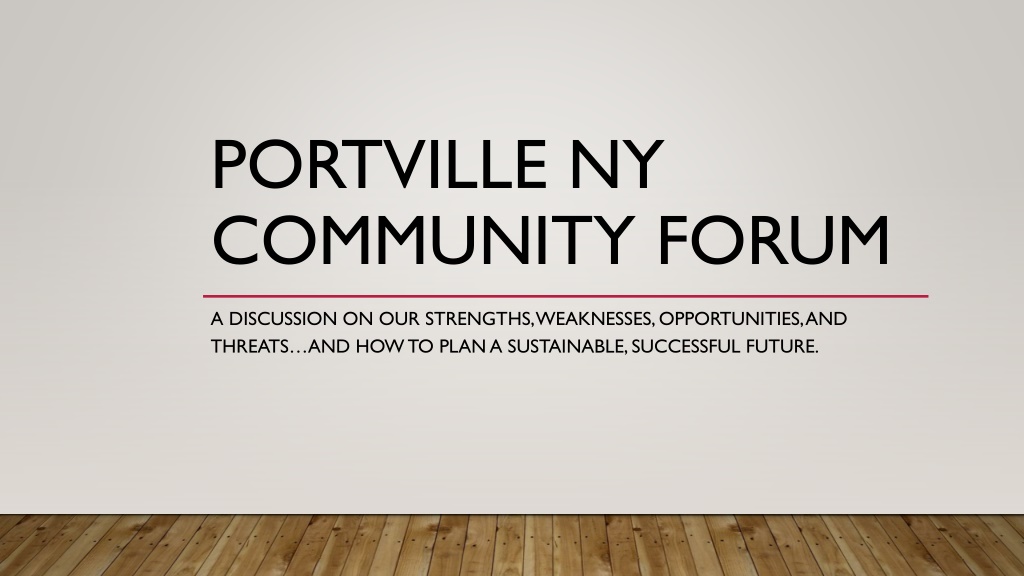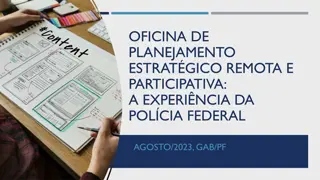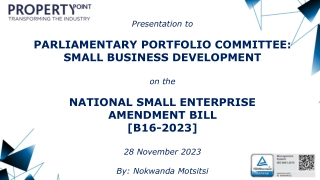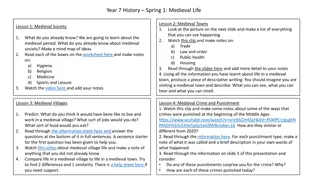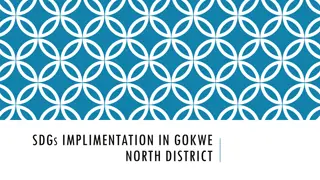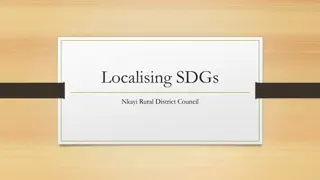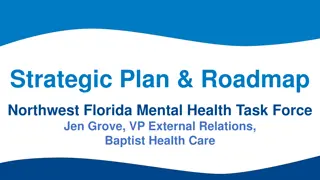Strategic Planning for Sustainable Small Communities and Towns
Explore the importance of strategic planning for small communities and towns to ensure sustainable growth and success. Learn how to identify strengths, weaknesses, opportunities, and threats, and create a vision for the future. Discover the significance of having a mission and vision statement, along with developing a fluid and living strategic plan that guides organizations towards their goals while honoring their mission. Emphasize building on assets, anticipating challenges, and sharing visions with stakeholders.
Download Presentation
Please find below an Image/Link to download the presentation.
The content on the website is provided AS IS for your information and personal use only. It may not be sold, licensed, or shared on other websites without obtaining consent from the author. Download presentation by click this link. If you encounter any issues during the download, it is possible that the publisher has removed the file from their server.
Presentation Transcript
PORTVILLE NY COMMUNITY FORUM A DISCUSSION ON OUR STRENGTHS, WEAKNESSES, OPPORTUNITIES, AND THREATS AND HOW TO PLAN A SUSTAINABLE, SUCCESSFUL FUTURE.
SUCCESSFUL SMALL COMMUNITIES.. Have a vision for the future Inventory their assets (recreational, natural, educational, architectural) Build plans around existing assets Use incentives and education, not just regulation and enforcement Pick and choose among development projects (community identity > corporate design) Pay attention to PLACE: People choose location/lifestyle ahead of employment Have strong leaders and committed citizens Adapted from E.T. McMahon, Urban Land Institute
SUCCESSFUL SMALL TOWNS KNOW. Quality of life is a competitive advantage. In-migration is key to growth and sustainability: new residents, new workers, new tourists, new visitors
DO YOU HAVE A MISSION? A VISION? A Mission Statement concisely describes: Who you are, what you do, who you serve, why you exist? A Vision Statement concisely describes: What you aspire to be, a stretch from current reality, an ideal.
YOUR STRATEGIC PLAN Strategic Planning is a process that explores options and makes decisions about an organization s future, and implements actions that guide the organization toward its vision while honoring and retaining its mission. A Strategic Plan is contextual and integrated, with budgets, actions, assessments, etc. A Strategic Plan is a fluid, living document a tool to be used, not a coffee table book. A Strategic Plan should be revisited, updated, and (possibly) amended periodically.
WHY A STRATEGIC PLAN? Build on assets and identify weaknesses Anticipate problems/challenges Explore new directions/partnerships Share your vision with other stakeholders In terms of Jim Collins and Good to Great, identify your Hedgehog
THE PLAN IN CONTEXT The Strategic Plan should be reviewed and updated regularly, and a critical tool in the budgeting and resource allocation process. ASK: How does this allocation of time, money, or other resources move us toward our vision? Incorporate the Plan into Budgeting, Resource Allocation, and Institutional Effectiveness but ultimately ALL DECISION-MAKING.
WHAT ITS NOT The Strategy Statements should be goals and not assumptions (e.g. having a balanced budget, taking good care of facilities, are probably more fitting as assumptions, not strategic goals. Ways in which we do business are also typically not strategic goals, but they can be a part of a values statement supplemental to the plan. (e.g. we treat staff/customers with respect; we value diversity)
THE ELEMENTS OF A STRATEGIC PLAN VISION What we aspire to be; a stretch goal and future position MISSION The reason why we exist, what we do, who we serve. CORE VALUES: The way we do business, how we operate daily, our culture, what s important to us. This includes assumptions or givens, so long as they don t tie down your creativity.
ELEMENTS OF A PLAN, CONTD STRATEGIES Broad goals that lead us to our Vision OPERATIONAL PLAN Actions, objectives, tactics that enable us to achieve strategies (SMART Specific, Measurable, Achievable, Relevant/Realistic, Time-based) KPI Key Performance Indicators measures of success and/or progress toward Strategic Goals
THE PLANNING FUNNEL: ISSUES STRATEGIES OBJECTIVES ACTIONS Environmental Scan Internal, External SWOT Analysis Emerging Critical Issues Priority Strategies Annual Objectives Operational Plans Ongoing Assessment
STRATEGIES Given all of the above, what strategies will move us closer to our ideal vision for the future? Are there any strategic changes we can make from our current course of business that will help move us in a more positive and successful direction? What must be addressed in the new plan and rises to the top of the priority list?
SWOT ANALYSIS Consider the INTERNAL Strengths and Weaknesses of your organization. Consider the EXTERNAL Opportunities and Threats for your organization. An analysis of these four quadrants, considered along with financial/feasibility factors will help identify emerging critical issues and priorities.
SWOT ANALYSIS INTERNAL EXTERNAL BUILD ON STRENGTHS EXPLOIT OPPORTUNITIES RESOLVE WEAKNESSES AVOID THREATS
GROUP DISCUSSION - SWOT If you had the opportunity to put some or all of your retirement savings into Portville Stock, (which paid dividends based on community success), please list: 1. 3 Main Reasons to Invest (Major Strengths/Opportunities) 2. 3 Concerns that keep you from investing (Weaknesses/Threats) 3. One audacious, bold new initiative that could improve/grow the community and give you more confidence.
EMERGING CRITICAL ISSUES: OF ALL THE ISSUES IN THE SWOT What MUST be addressed in the new plan? What rises to the top of the priority list? (time to connect the dots!)
COMPLETING THE PLAN Strategic Goal Statements should be reviewed at least annually and revised accordingly. (3-4 Statements) Objective Statements should be created annually for each Strategic Goal (unless completed). Action Plans will be developed for each objective (typically by staff or committees), with results reported periodically to the board.
